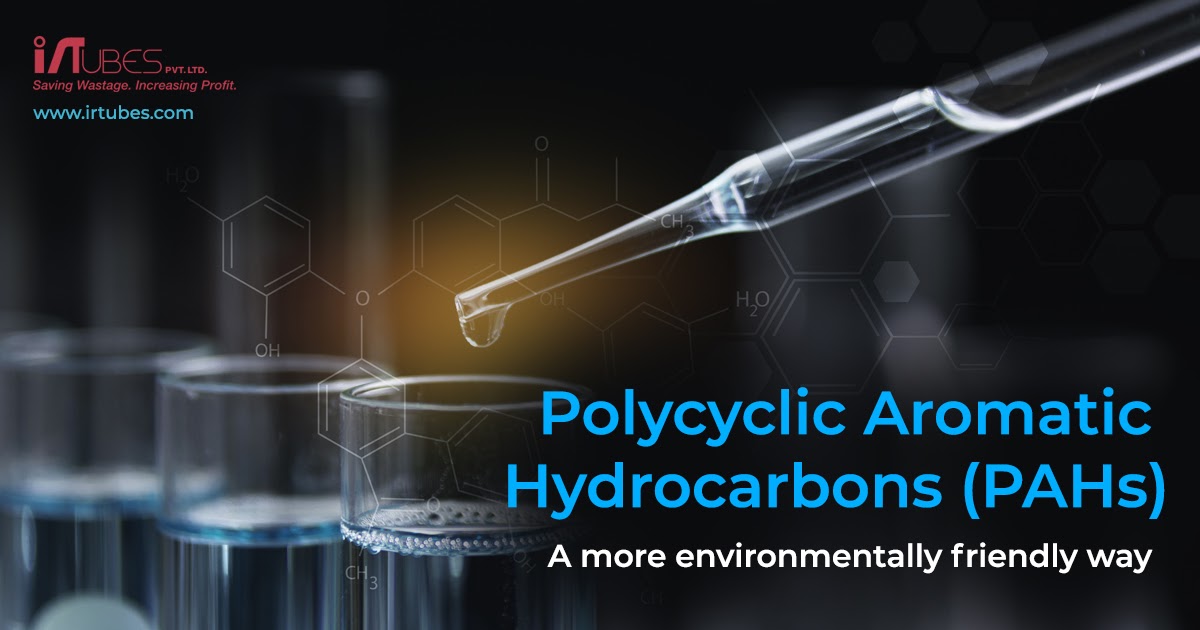
The emphasis of this article is on the hazards of using products with polycyclic aromatic hydrocarbon (PAH) emissions. More importantly it also highlights specialty chemicals used in the Rubber and Plastic Industry that do not contain PAHs.
PAHs are generated whenever substances are burned. Inhaling smoke or encountering contaminated soil exposes people to PAHs. Some PAHs may cause cancer and may affect the eyes, kidneys, and the liver.
PAHs are a concern because they are persistent. Because they do not burn very easily, they can stay in the environment for long periods of time.
Individual PAHs vary in behavior. Some can turn into vapor in the air very easily. Most PAHs are not only pro-carcinogens, but also are listed as genotoxic and mutagenic – essentially meaning that they may bind directly to DNA thereby causing mutations which may or may not lead to cancer or birth defects.
Although some of this article talks about PAHs emitted from vehicles, PAHs are ubiquitous substances. They are found just about everywhere, which makes the need for discovering chemicals that do not contain PAHs even more urgent.
They are found in terrestrial and aquatic plants, in soils and bottom sediments, in fresh and marine waters, in emission from volcanoes and naturally occurring forest fires, and in the products of numerous human activities. The anthropogenic sources vary widely – major oil spills and the inestimable minor spills of petroleum products, emission from coal- and gas-fired boilers and electric-power generating plants, space heaters (especially in individual residences), municipal and industrial incinerators, and all sorts of industrial processes. It is not possible to list all the sources or to count or measure the PAHs produced by them. The various PAH compounds and the amounts emitted into the environment from each of the sources result in a complexity that makes it difficult to trace and identify the major contributing sources.
PAHs in the Auto Industry
The head of the biggest car maker in India has been making news with his clarion call citing the slowdown in the auto industry, shortage of chips, the need to curb salary hikes for Senior management and for, and probably the most important, if the Indian auto industry needs to be globally relevant – the move to embrace Euro VII emission norms. In the auto industry innovation to determine emissions can be in four areas: Vehicle technology, Fuel Quality, Inspection and Maintenance, Road and Traffic Management. India has done well and has made inroads in Vehicular technology. Fuel Technology is one area where there can be further improvement. The Delhi, NCR region of North India became notorious for its drastic rise in air pollution levels. This attracted attention and subsequently led to the government making a conscious decision of leapfrogging Bharat Stage V emission norms that were subject to implementation in 2020, as well as advancing the introduction of Bharat Stage VI emission norms from 2024 to 2020.
Apart from the obvious benefit to climate and the environment, decarbonizing the country’s transport sector and new vehicle fuel-efficiency standards, would result in large economic benefits for consumers and the economy in general, as it would reduce the need to import significant amounts of refined petroleum products. The savings would free large monetary resources from international transactions that could be injected into the national economy.
PAHs in the Rubber and Plastic Industry
Rubber and plastic products are pretty much found just about everywhere in our lives. The main source of PAHs is the different additives used in the industry to improve compound flow and release. Additives in plastic can be plasticizers, colorants, stabilizers, fillers, reinforcing fibers, antioxidants, processing aids etc.
Additives are used by manufacturers to make polymers easy to process. In finished rubber products it aids processing that is the mixing, thereby reducing compounding time and enhancing/modifying the physical properties of the finished goods.
Many products consisting of the following materials or additives are considered to have potential PAH contamination:
- Rubber and flexible plastics (e.g., PVC): Softening oils and carbon black.
- Plastics, plasticizers and fillers.
Within these two broad areas are products made from natural and synthetic rubber used in pneumatic tires, tire products, inner tubes, automotive belts, conveyor and transmission belting, hoses, packing and sealing devices, gloves.
From the consumer sector erasers, golf balls, inflatable articles, mats, textiles.
From the hygiene and medical sector: examination and surgical gloves, contraceptives, blood bags, syringes, medical implants etc.
Electrical devices: Grips and handles (grips/handles made of rubber or plastic e.g., of tools (hammer, screwdriver, knives, pliers, bicycles, gardening tools, buggies, stationary bicycles, walking frames, torches, handle coating).
Contact areas of sports equipment and other articles.
Toys (balls, figures, toy cars, run bikes, colored pencils, toy guns, electrical parts of toy train sets).
Materials with close contact to the body (shoes, gloves, underwear, working clothes, flip-flops).
Other products with skin contact (ski goggles, headphones, pulse monitors, eyecups, desk pads, bracelets, steering wheel covers, computer mice, mouse pads, furniture handles, watch straps).
Thus, we can see that almost all the products we use in our daily lives has the potential of containing PAHs which have proved to be harmful.
Plasticizers that do not contain PAHs: The Better Way
Enforced compliance to environmental norms have pushed specialty chemical manufacturers into innovating with products that have much lowers levels of PAH and in some cases, have none. To ensure that Indian products comply with international standards, the chemicals used must be REACH and ROHS compliant.
The presence of specialty chemicals are in products we use in our day to day lives for e.g., cleaning products, paints, clothes, furniture, food, electrical appliances etc. Companies in the chemical space must comply with the requirement of non-hazardous products, must identify and manage the risks linked to the substances they manufacture and market.
EDENOL® DOZ is a plasticizer in developing used in most PVC paste coatings. Emery Oleochemicals, the manufacturer of this chemical has ensured that PAHs that there are no harmful chemicals according to REACH. PVC paste is mainly used to coat truck tarpaulins, marquees, floor coverings and as metal coatings.
Vinyl films, sheeting and coated fabrics made with EDENOL DOZ plasticizer show exceptional softness and excellent surface properties. The broad resin applications of EDENOL DOZ include PVC, NBR, NBR/PVC, CR, CM and CSM. EDENOL DOZ also complies with indirect food contact directives (FDA).
Products from Emery Oleochemicals like EDENOL 1208, EDENOL 111, EDENOL 181, EDENOL DOZ and D. O. G. Deutsche Oelfabrik are also chemicals that have no PAH.
Conclusion
IR Tubes Private Ltd. is a Specialty Chemicals company that represents Robinsons Brothers, Acquaspersions, Emery Oleochemicals, Omya & DOG Deutsche Oelfabrik. They are also representatives of Cariflex for Synthetic Isoprene Latex. All products are REACH and ROHS compliant.
REACH (Registration, Authorisation and Restriction of Chemicals) is a regulation of the European Union, adopted to improve the protection of human health and the environment from the risks that can be posed by chemicals. It is important to understand that this applies to all chemical substances and not just industrial processes.
Raju Jethmalani
Share on:
